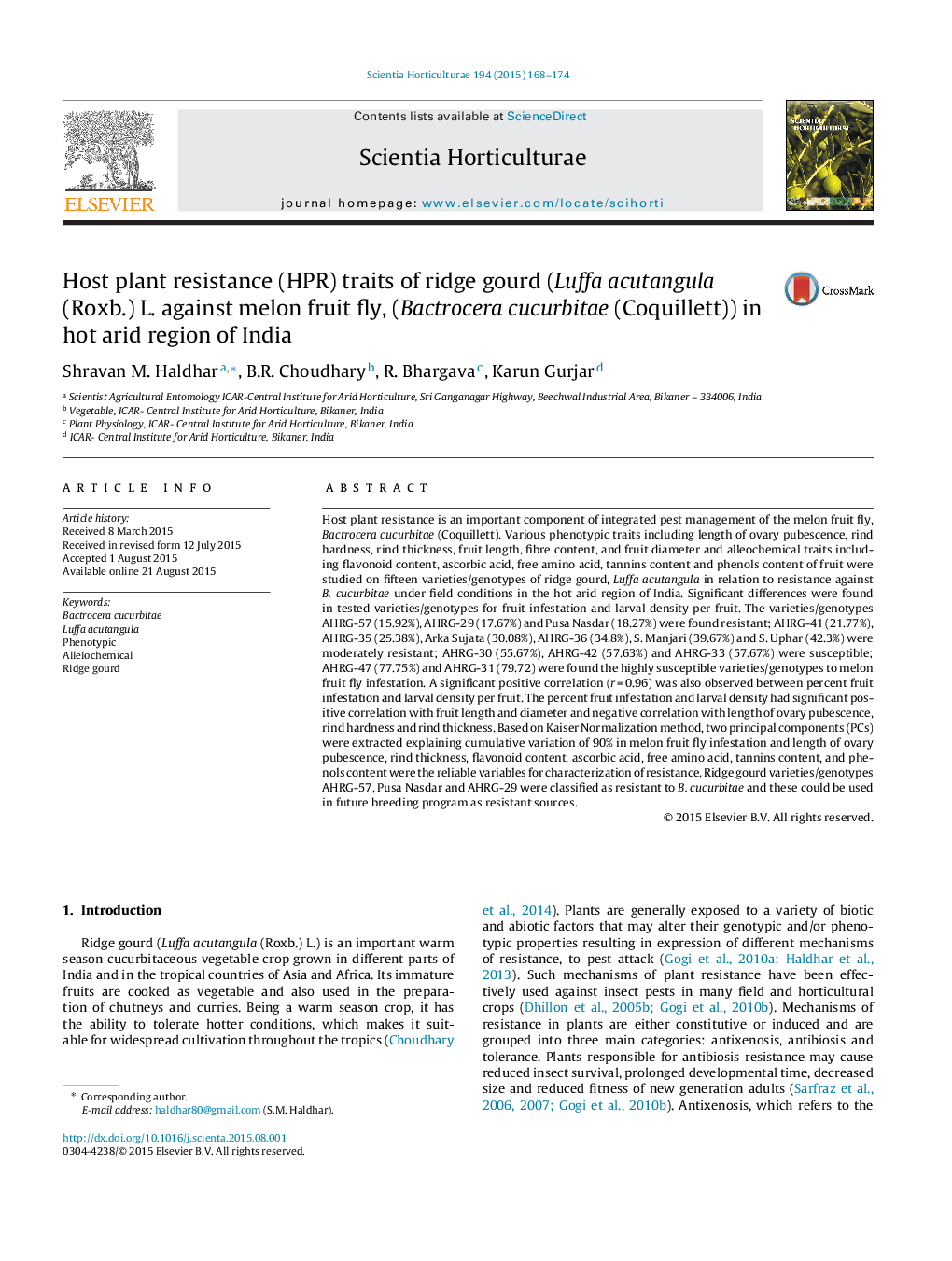| Article ID | Journal | Published Year | Pages | File Type |
|---|---|---|---|---|
| 4566329 | Scientia Horticulturae | 2015 | 7 Pages |
Host plant resistance is an important component of integrated pest management of the melon fruit fly, Bactrocera cucurbitae (Coquillett). Various phenotypic traits including length of ovary pubescence, rind hardness, rind thickness, fruit length, fibre content, and fruit diameter and alleochemical traits including flavonoid content, ascorbic acid, free amino acid, tannins content and phenols content of fruit were studied on fifteen varieties/genotypes of ridge gourd, Luffa acutangula in relation to resistance against B. cucurbitae under field conditions in the hot arid region of India. Significant differences were found in tested varieties/genotypes for fruit infestation and larval density per fruit. The varieties/genotypes AHRG-57 (15.92%), AHRG-29 (17.67%) and Pusa Nasdar (18.27%) were found resistant; AHRG-41 (21.77%), AHRG-35 (25.38%), Arka Sujata (30.08%), AHRG-36 (34.8%), S. Manjari (39.67%) and S. Uphar (42.3%) were moderately resistant; AHRG-30 (55.67%), AHRG-42 (57.63%) and AHRG-33 (57.67%) were susceptible; AHRG-47 (77.75%) and AHRG-31 (79.72) were found the highly susceptible varieties/genotypes to melon fruit fly infestation. A significant positive correlation (r = 0.96) was also observed between percent fruit infestation and larval density per fruit. The percent fruit infestation and larval density had significant positive correlation with fruit length and diameter and negative correlation with length of ovary pubescence, rind hardness and rind thickness. Based on Kaiser Normalization method, two principal components (PCs) were extracted explaining cumulative variation of 90% in melon fruit fly infestation and length of ovary pubescence, rind thickness, flavonoid content, ascorbic acid, free amino acid, tannins content, and phenols content were the reliable variables for characterization of resistance. Ridge gourd varieties/genotypes AHRG-57, Pusa Nasdar and AHRG-29 were classified as resistant to B. cucurbitae and these could be used in future breeding program as resistant sources.
